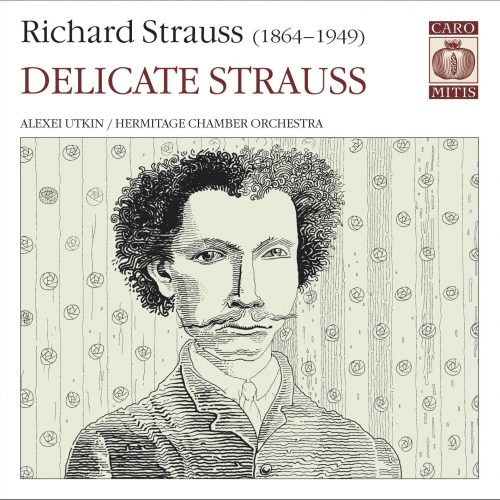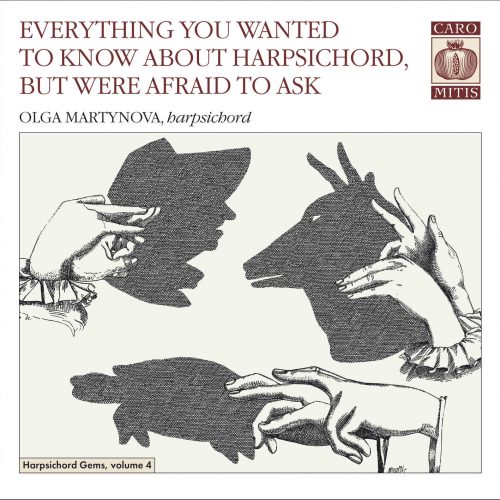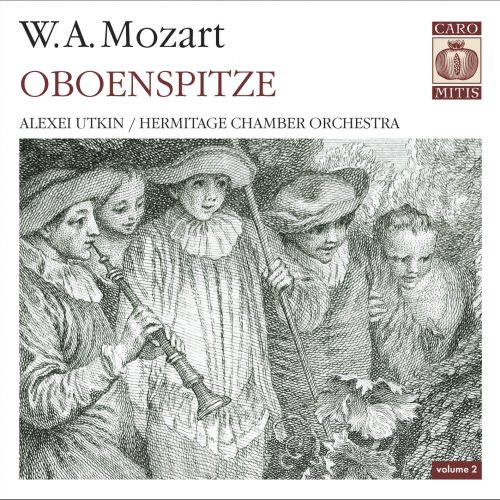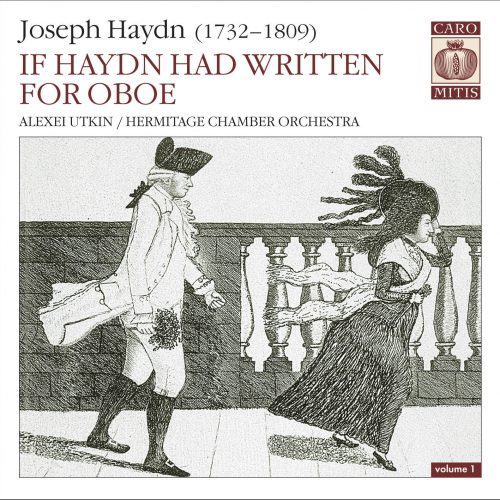
In 1711 Jean-Féry Rebel published his orchestral Caprice. This piece immediately achieved great popularity among the Parisians and attracted attention of the celebrated Françoise Prévost who set her solo dance to the music of the Caprice. Her performances were so successful that soon after that each ballet dancer, making her debut, had to know Rebel’s Caprice. The transformation of an instrumental piece into a dance was not an extraordinary occurrence for the French Baroque theatre. In this domain it was common to sing a Chaconne or to dance an aria, court performances envisaged vocal numbers together with dances. For that reason, the appearance of Rebel’s Caprice merits special attention: apparently this piece was the first ballet without singing. A year after the Caprice, another piece by the composer, the Boutade (fancy, whim, joke in French), was turned into a dance.
Tracklist
Please note that the below previews are loaded as 44.1 kHz / 16 bit.Total time: 00:59:41
Additional information
| Label | |
|---|---|
| SKU | CM0052005 |
| Qualities | |
| Channels | 2ch Stereo, 5 Channel Surround Sound, 2ch Stereo & 5ch Surround |
| Artists | |
| Composers | |
| Genres | |
| Awards | |
| Recording Software | Merging |
| Recording Type & Bit Rate | DSD64 |
| Recording location | 'Manege' Hall of the Moscow Theatre School of Dramatic Art, 5th Studio of the Russian Telvision and Radio |
| Recording Engineer | Erdo Groot, Roger de Schot |
| Producer | Michael Serebryanyi |
| Microphones | Neumann km130; DPA (B & K) 4006 ; DPA (B & K) 4011 SCHOEPS mk2S; SCHOEPS mk41 |
| Digital Converters | Meitner |
| Original Recording Format | |
| Conductors | |
| Instruments | |
| Release Date | September 19, 2015 |
Press reviews
Audiophile Audition
The Elements was a precursor of the romantic period in being a major programmatic work, and one of the first depicting the creation of the world.
These recordings in the Pratum Integrum series on Caro Mitis were made in Moscow in 2005. These works from the highly original French baroque composer and violinist were edited and arranged by the ensemble’s Artistic Director Pavel Serbin. Rebel had been a student of Lully and played in the prestigious “24 Violins of the King” at the French court. He was one of the first French composers to create sonatas in the Italian style, and his music was performed in London under Handel’s baton.
The 23-minute “new symphony” The Elements – the major piece here – was a precursor of the romantic period in being a major programmatic work, and one of the first depicting the creation of the world. It opens with a discordant cluster of notes represent Chaos – the first time such dissonance appeared in the history of European composed music. There are movements for the elements of Earth, Fire, Air and Water. The Characters of the Dance is a short ballet about a ballet. It boasts 14 very brief movements in styles such as the Courante, Menuet, Bourree, Saraband, and so on, and is a good example of Rebel’s “choreographed symphonies.”
The playing of the small period instrument orchestra is on an extremely high plane, and the disc’s surround sonics are as usual topflight – the product of an association with Polyhymnia International. Anyone enjoying instrumental music of the French baroque period will want to have this disc.
DIE VIELLEICHT FRANZÖSISCHSTE PRODUKTION DES JAHRES
…kommt aus Russland. Das Pratum Integrum Orchestra zeigt sich einmal mehr enorm wandlungsfähig und in bester Muszierlaune. Seine neue SACD hat es dem französischen Barockkomponisten Jean-Féry Rebel (1666-1747) und dessen programmatischen, reich instrumentierten Balletten gewidmet. Rebel stand zwar in der Tradition Lullys und De Lalandes, entwickelte aber den französischen Orchesterstil auf dieser Grundlage weiter und stieß in seinem Spätwerk bereits die Tür zur Klassik auf.
Sein hierzulandes bekanntestes Stück dürfte “Die Elemente” aus dem Jahre 1737 sein, das er selbst als “simphonie nouvelle”, als “neue Symphonie” titulierte. Populär geworden ist es nicht zuletzt durch die Einspielung mit Musica Antiqua Köln unter Reinhard Goebel (DGG, 1994). Goebels Auffassung der Elemente entspricht in ihrer Wucht und mechanischen Ruppigkeit indes oftmals wohl eher unserem Atomzeitalter, als den barocken Vorbildern. Ganz anders ist das Werk hier zu erleben: Obwohl nichts von seiner Dramatik und seiner zeitweiligen Abgründigkeit verloren geht, gelingt es dem Ensemble, dem ganzen viel tänzerischen Schwung und Transparenz zu verleihen.
Dieser wird auch charmant in “Les plaisirs champetres” beibehalten, das allerdings ohnehin eher höfisch-harmlos daherkommt.
Die Symphonie “Les caracterès de la danse” bietet sodann einen gleichermassen lehrreichen, wie mitreissend-wirbelnden Überblick über die höfischen Tanzstile der damaligen Zeit. Und genau diese wurden durch das Werk dem damals in Versailles weilenden Zar Peter dem Großen hiermit auch vorgestellt. Es ist bei einer derart körperreichen, klangsatten Interpretation ein Leichtes, sich den Glanz vorzustellen, den die Komposition dem Fest zusätzlich verlieh.
So ist die SACD insgesamt ein weiterer Glanzpunkt in der mittlerweile recht umfangreichen Diskographie des Orchesters geworden. Das Klangbild ist einmal mehr räumlich gut gestaffelt und sehr plastisch. Das Booklet bietet umfangreiche Infromationen, aber leider nur in Englisch, Französisch und Russisch.
Opus Haute Définition: Jean-Féry Rebel Ballets Sans Paroles
Compositeur français élevé dans une famille de musiciens, Jean-Féry Rebel (1666-1747) fut violoniste dans l’orchestre de l’Académie royale de musique, après avoir étudié avec son père, Jean Rebel. Auteur notamment d’une tragédie lyrique “Ulysse”, de plusieurs volumes de Sonates et pièces pour violon, ainsi que de musique sacrée, Jean-Féry Rebel est surtout connu pour sa musique scénique “Les Eléments” qu’il composa à l’âge de soixante douze ans. Le bel enregistrement qui nous occupe ici, intitulé “Ballets sans paroles” reprend l’oeuvre, dans la révision de Pavel Serbin, avec d’autres partitions dédiées à la scène comme “Caprice” datant de 1711, “Boutade” pour violes de gambes et clavecin, datant de 1712, “Les Plaisirs Champêtres” de 1734, “Les Caractères de la Danse, Fantaisie” de la même année, ainsi que la “Fantaisie” de 1729. Malgré des “Eléments” un peu sages, le Pratum Integrum Orchestra, jouant sur instruments d’époque restitue, avec grâce et ferveur, les couleurs de ces pièces à la sensualité parfois teintée de mélancolie. Saluons une nouvelle fois la qualité de l’édition avec cette fois, une traduction française du livret. Un excellent Super Audio CD à la prise de son soignée et naturelle en pur DSD.
Toccata Music Update (Alte Musik Aktuell)
There is hardly another orchestra that jumps from one era to another as easily as the Moscow Pratum Integrum Orchestra. They perform the music of Wolf, Telemann, Berezovsky, Tietz, Bortnyansky, and now Rebel. Often one quickly finds out where the strong and weak of an orchestra lies. Should they focus more on Viennese classical or romantic is, more on baroque? Not so here at the Pratum Integrum Orchestra! The baroque music sounds as convincing as the music of Viennese classical and fresh romanticism.
Jean-Féry Rebel (1666-1747)? This was my first contact with this “wild” baroque composer. Rebel comes from a family of musicians and grew up on the French court. He was a harpsichordist, violinist, and conductor. At the age of eight, he inspired the Sonnenkonig and Jean-Baptiste Lully with his violin playing. From 1699, Rebel was one of 24 violons du Roi and spater conducted the Orchestre de l’Academie Royale de Musique. One of his sons, Francois Rebel, also became a famous musician. That’s why Rebel is sometimes called le pére, the father.
Rebel’s symphonies were an elitist Parisian genre and were inspired by the stays of outstanding guests of the court as an example of high-start art music in Paris. Thus, Peter the Great hoarded the symphony “les caractéres de la danse” during his stay. At the time, the Russian tsar had a thought about the organization of court bales in Russia. U. Rebel also had some ties to Russia. And with that we had a commonality between this music and the performers.
For we listen to the “caractéres de la danse” (1734) as well as “Les Éléments” (1737-38), “Caprice” (1711), “Boutade” (1712) and “Fantaisie” (1729). Pavel Serbin has worked on the works, transcribed for viola da gamba and b.c. (Boutade) and arranged them, as always with a happy hand.
The recording is very impressive, very individualistic, and characteristic. The young Moscow orchestra is already unmistakable, having created its own sound. The interpretation is fluent (you hear more closely. This is breathtakingly fast, but technically it is made with no hustle and no impurities) and at a level that can only be achieved after years of hard work. These musicians have worked, they have Schneid and Fortune. That’s what you’re hoarding!
Only logged in customers who have purchased this product may leave a review.






Reviews
There are no reviews yet.